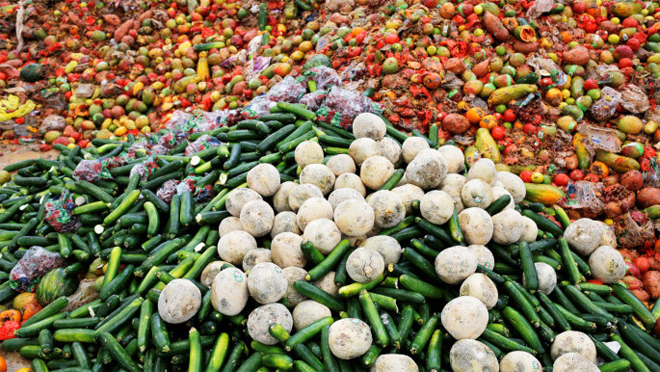Bangladesh wastes 34% of food annually: World Bank study
Bangladesh wastes 34% of food annually: World Bank study

Highlights:
- The wastage worth 4% of GDP
- 27% of farmland grows food that goes uneaten
- Food waste causes 13% of the country’s greenhouse gas emissions
- 31% of people face food insecurity; 66% can’t afford a healthy diet
- Nearly 30% of fish is discarded due to illegal nets
- Farmers suffer from poor storage, low prices, and distribution gaps
Bangladesh wastes nearly 34% of its available food annually, resulting in major economic, environmental, and social consequences, according to a World Bank study shared at a national conference in Dhaka today (29 September).
The study stated that more than 34,000 square kilometres of land — about 27% of the country’s cultivated area — is used to grow food that ultimately goes to waste. The economic loss from this wastage is estimated at the equivalent of 4% of Bangladesh’s GDP.

Highlights: TBS
Presenting the World Bank findings, Son Than Vho, senior agriculture specialist of the global lender, said food loss and waste (FLW) also contribute significantly to climate change, accounting for 13% of the country’s total greenhouse gas emissions, or around 29 million tonnes of CO2 equivalent.
At the same time, 31% of Bangladeshis face food insecurity, while 66% cannot afford a healthy diet – highlighting the stark paradox of massive waste amid widespread scarcity.
The findings were shared at the conference “Towards Zero Food Waste and Loss: Building a Sustainable Food Value Chain in Bangladesh” organised by the Centre for Policy Dialogue (CPD) at the Pan Pacific Sonargaon Hotel in partnership with the Embassy of Denmark, FAO, the World Bank, and WFP.
According to the study, most food losses occur during production, transport, handling, storage, and processing, while waste is concentrated at retail and consumer levels. The net loss rates for key commodities are – rice (23%), lentils (27%), fish (36%), and mangoes (29%).


